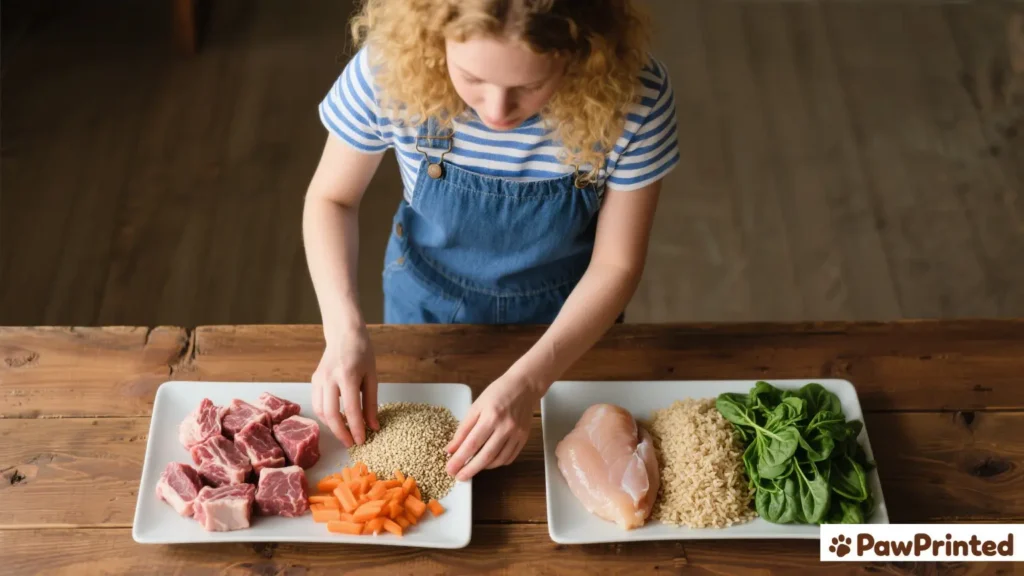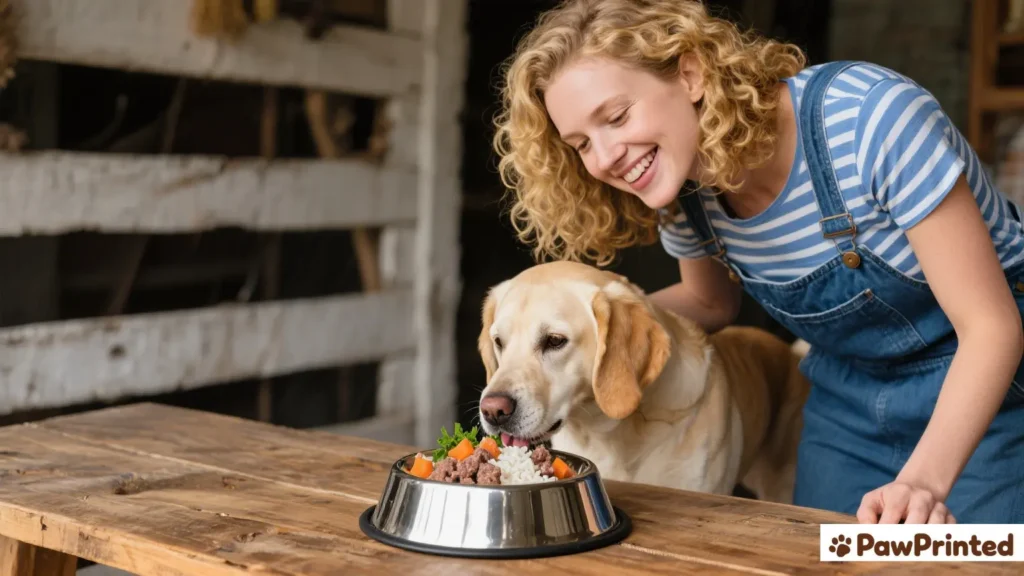When Ethan’s itch cycles wouldn’t settle on chicken and beef, our vet suggested a quieter lane: a single-protein lamb plan with simple carbs. The promise wasn’t “no allergies ever”—it was fewer triggers, slower changes, and real notes. Two weeks in, Ethan’s stools steadied; by week four, his paw-licking eased. But is lamb dog food actually hypoallergenic—or just a kinder starting point?
Red flag — call your vet: facial swelling, hives, trouble breathing, raw skin lesions, black/tarry stools, or nonstop itching that disrupts sleep. These can signal urgent care or deeper allergies.

What Does “Hypoallergenic” Dog Food Actually Mean?
“Hypoallergenic” doesn’t mean zero allergies. It means a diet less likely to trigger reactions in most dogs—usually by removing common offenders and simplifying ingredients. In practice, hypoallergenic approaches fall into three buckets:
- Novel protein: a less-exposed protein (e.g., lamb, duck, venison) your dog hasn’t eaten much before.
- Hydrolyzed protein: proteins broken into smaller fragments to dodge the immune radar.
- Limited-ingredient diets (LID): one primary protein + one carb, short labels, fewer extras. See our Limited-Ingredient Guide.

Why Lamb Is Often Marketed as “Hypoallergenic”
Chicken and beef appear in countless formulas; repeated exposure can correlate with sensitivities in some dogs. Lamb, by contrast, is less common in many households—so it’s considered a novel protein for lots of pups. In LID recipes, lamb lets you control variables: one protein, predictable carbs, and fewer additives. That’s why many pet parents see calmer skin and steadier stools after a measured switch. For the big picture on lamb-based feeding, see our Lamb Dog Food Guide and the side-by-side Lamb vs Chicken comparison.
Does Lamb Work for Every Allergic Dog?
No single protein works for all dogs. Some pups can react to lamb, especially if they’ve eaten it often before. “Hypoallergenic” is a strategy, not a guarantee. If your dog’s symptoms persist or worsen—despite a clean, single-protein plan—loop in your vet to discuss hydrolyzed diets or prescription options. For broader planning, see our Dog Food for Allergies Hub and Sensitive Skin Guide.

Best Ways to Test If Lamb Works for Your Dog
- Pick one lamb-first LID base: keep the label short and clear; avoid mixed proteins at the start.
- 7–10 day transition: mix gradually and don’t add new toppers. Follow our transition guide.
- Run the trial 6–8 weeks: track itch scores (0–10), stool firmness (1–5), ear debris/odor, and coat shine weekly.
- Hold everything else steady: treats, oils, supplements—add one change at a time if needed.
Our Vet’s Take & Ethan’s Experience
Our vet’s recipe was boring on purpose: one lamb-based LID, measured omega-3s by weight, and patience. By week two, stools normalized; by week four, paw-licking fell off our radar. If your dog improves, resist the urge to add three new treats in celebration—stay steady a bit longer. When you’re ready to choose products, start here: Best Lamb Dog Food.
FAQ
Is lamb considered hypoallergenic for dogs?
Often, yes—especially when used as a limited-ingredient single protein. But “hypoallergenic” means fewer triggers, not zero risk.
Does lamb dog food stop itching?
It can help when chicken or beef are part of the problem. Pair lamb with measured omega-3s and simple carbs. For a full skin routine, see our Sensitive Skin Guide.
What’s the difference between lamb and hydrolyzed protein diets?
Lamb is a novel whole-protein option; hydrolyzed diets break proteins into smaller fragments to reduce immune recognition. If lamb LID doesn’t help, ask your vet about hydrolyzed options.
Can puppies eat lamb-based hypoallergenic diets?
Yes, as long as the formula is labeled for growth or all life stages. Confirm calcium and calories with your vet and transition slowly.
Note: Keep the rest of your routine boring during trials—no new treats, toppers, or oils for 6–8 weeks. One change at a time tells you what’s actually working.

Follow PawPrinted on Pinterest
Get hypoallergenic diet tips, allergy-friendly recipes, and vet-approved feeding routines for calmer skin and steadier digestion.

